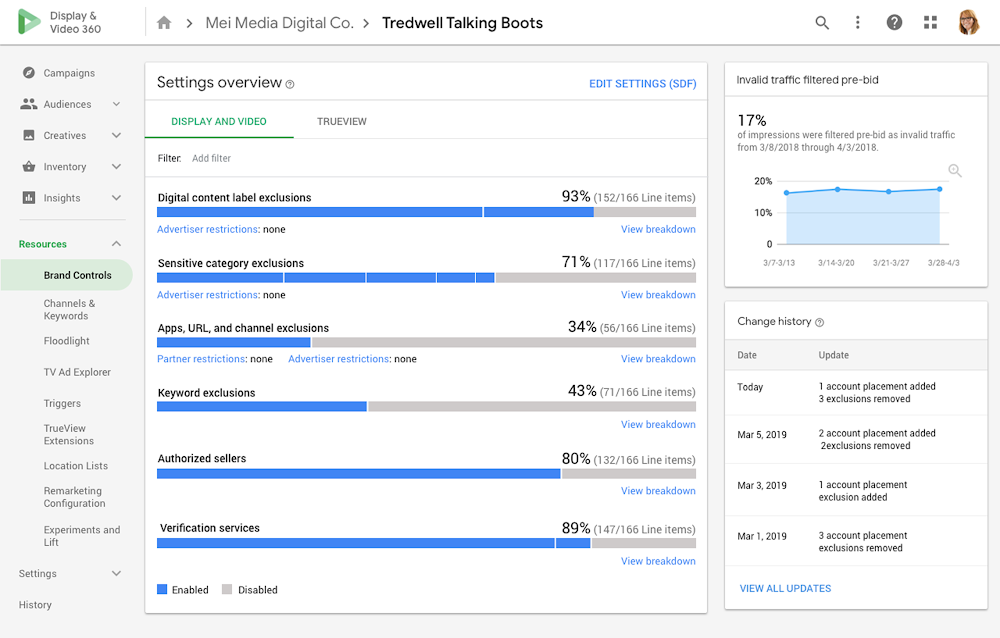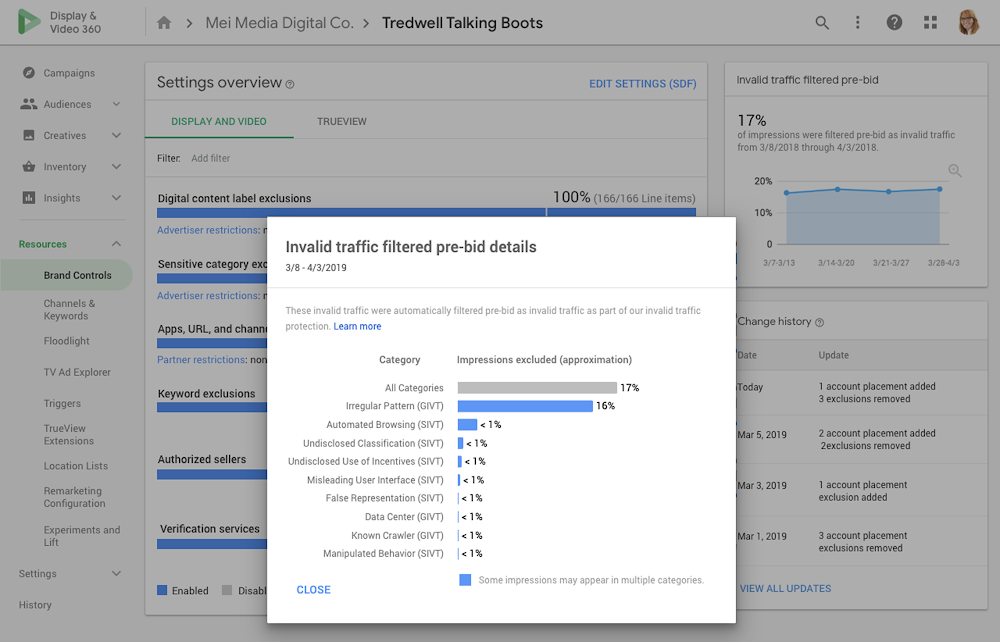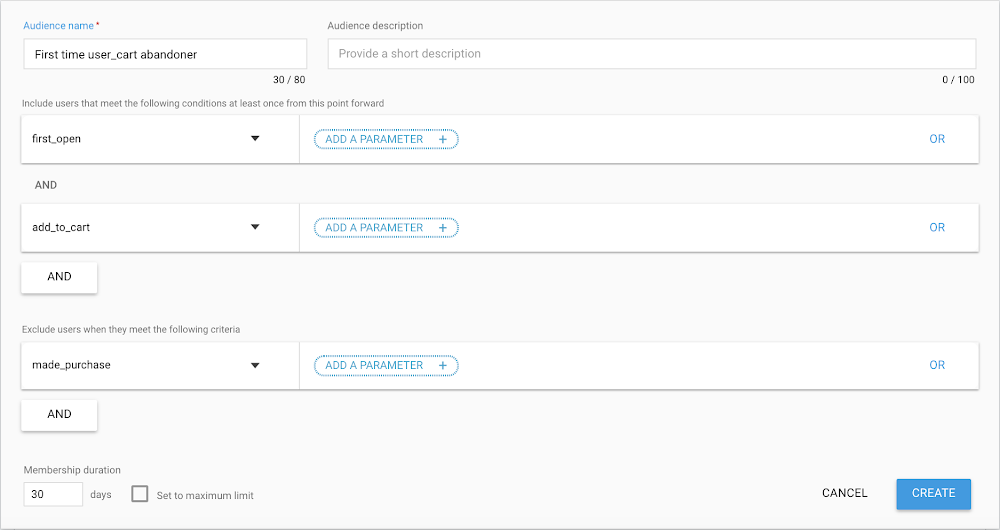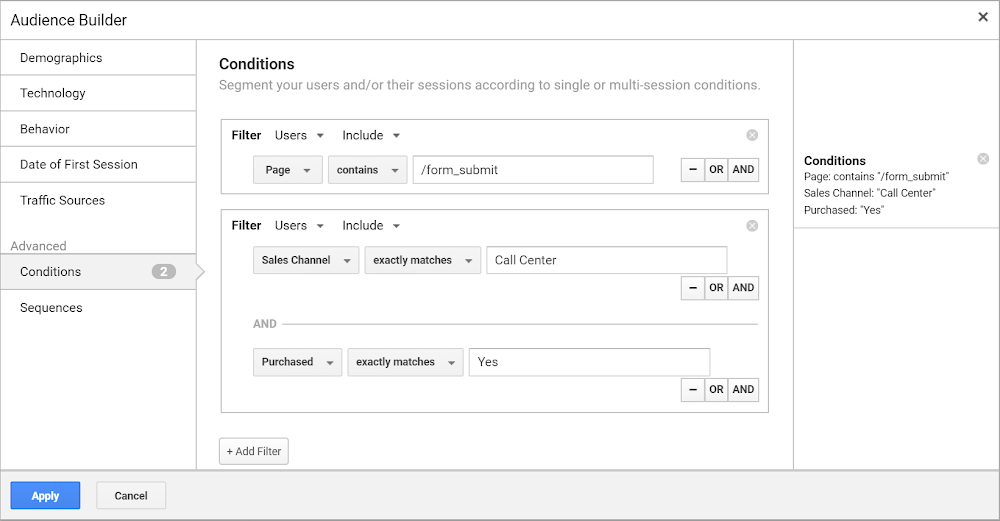We support efforts to increase transparency in the digital advertising ecosystem and we’re committed to making it easier for marketers to monitor their digital campaigns and protect their brand. That’s why we’re introducing new ways for Display & Video 360 to help you avoid buying unauthorized web and app ad inventory, and control where your digital ads are appearing.
New default setting to ads.txt-only web inventory
Since it was first conceived in May 2017, Google has supported and contributed to the IAB Tech Lab’s ads.txt standard. It’s a text file that lets publishers openly declare who is authorized to sell their inventory programmatically. Ads.txt increases transparency throughout the advertising supply chain: marketers know they're buying inventory from the actual property owner, or an authorized reseller, and legitimate publishers receive payment. Because of its simplicity and effectiveness, over 93 percent of the web inventory available in Display & Video 360 is authorized by ads.txt files. In fact, ads.txt is one of the most rapidly adopted standards that our industry has seen.
Starting in August, we’ll make ads.txt-only the default setting for all new campaigns created in Display & Video 360 and running on web inventory. This ensures that by default you only buy authorized inventory and is the next step in our ongoing support of the standard.
Support for IAB Tech Lab’s app-ads.txt
Ads.txt was created to reduce fraud for your campaigns running on the web by making it easier to avoid transacting unauthorized inventory. To give you the same level of protection against misrepresented app inventory, the IAB Tech Lab recently introduced the new app-ads.txt standard which supports apps running on mobile, connected TVs and other devices.
While it’s very early days for app-ads.txt adoption, we’re actively working to encourage app developers to publish app-ads.txt files. In the next few months, Display & Video 360 will stop buying unauthorized app inventory as identified by app-ads.txt files. When adoption of app-ads.txt reaches sufficient levels, we will allow marketers and agencies to choose to buy only app inventory that is authorized.
A new home for all brand protections
In addition to knowing that you’re buying inventory from authorized sellers, you also need to ensure your ads appear only in contexts that you define as suitable for your brand. Display & Video 360 offers a comprehensive set of controls to protect your brand, but we’ve heard feedback that it can be difficult to apply these controls consistently—especially if you are managing a large number of campaigns.
To help solve this challenge, we’ve introduced Brand Controls, a new resource available to all Display & Video 360 users that gives you a single view of the brand suitability settings, campaigns using ads.txt-only authorized sellers, and verification services across all of your campaigns. With the Brand Controls dashboard, you can also more easily see how your campaigns are using different controls including content labels, sensitive categories, and keyword exclusions.

The Brand Controls dashboard gives you a snapshot of all the brand protections used in all your campaigns.
Now you can manage and make changes to all of these settings across all the campaigns in your Display & Video 360 account at once--including display, video, apps and TrueView. For example, let’s say you realize that some of your campaigns are not using any digital content label exclusions. You can quickly make bulk edits with Structured Data Files and immediately change the settings across multiple campaigns, right from the Brand Controls dashboard.
With Brand Controls you can also get a report that shows you what percentage of traffic was filtered before a bid was placed using our built-in fraud detection and brand suitability safeguards, and the reasons why. This way you can get full transparency on how Display & Video 360 is protecting your media buys.

With Brand Controls you can get a detailed report of the invalid traffic filtered pre-bid for all your campaigns.
Finally, the Brand Controls dashboard makes it easy to track any edits that are made to your brand suitability, authorized sellers, and verification settings. This helps you ensure that your media team follows the guidelines you’ve setup to protect your campaigns.
By making ads.txt-only the default setting for new campaigns, supporting the new app-ads.txt standard, and creating the new Brand Controls center, we're making Display & Video 360 a more effective solution to help you protect your budget and your brand.












